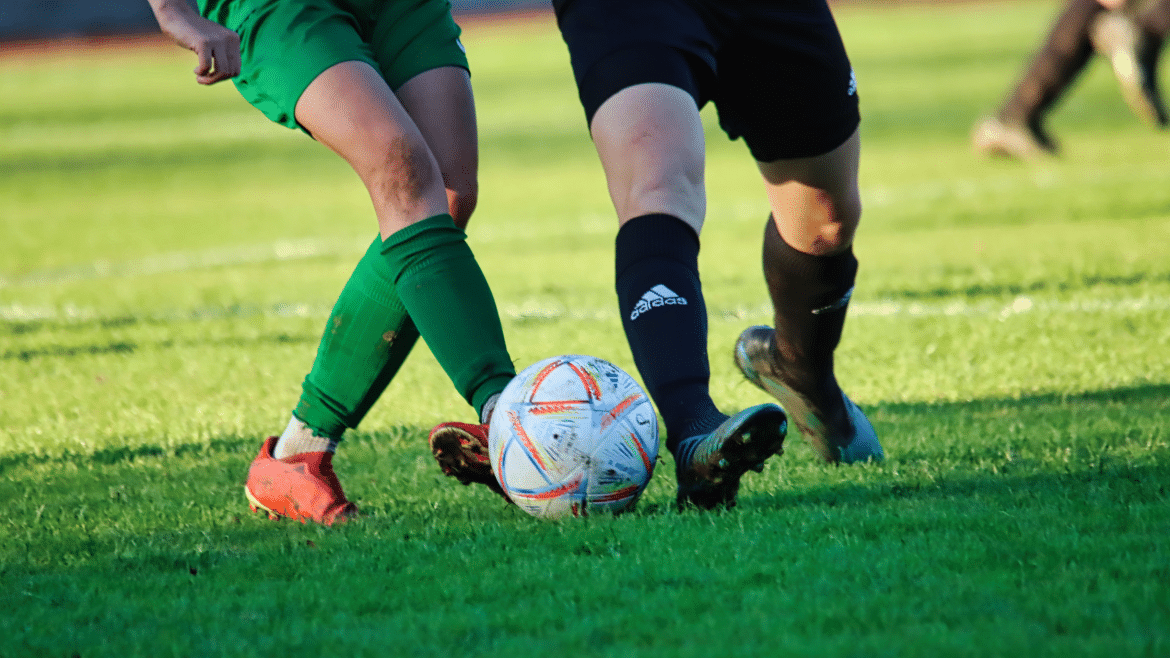 Jul
08
Jul
08
Why is Shin Guard Fit and Placement So Important?
- 8 julio 2025
- 0 Comment(s)
If you have ever experienced a kick to the shin when playing football, then you already understand why shin guards are essential. But it’s not so much that you wear them, it’s that you wear them correctly.
Whether you’re new to the sport or a veteran player doesn’t matter: shin guard fit and correct shin guard positioning are an enormous factor in how well you’re protected on the field. Doing it wrong means bruises, pain, and injuries. Doing it right? It lets you step onto the pitch with confidence, knowing your legs are protected and your focus stays firmly on the game.
Choosing Proper Shin Guard Fit and Placement
FIFA Rules
Let’s discuss rules. Shin guards, by FIFA’s Laws of the Game, are required. Players aren’t allowed on the field without them. Here are the specifics in the rules:
- They must be constructed from a safe material such as rubber or plastic.
- Socks must fully cover them.
- They must also offer a fair amount of protection.
FIFA opens up room for varying styles and designs, but ultimately, the emphasis is placed on the safety of football shin guards. No protection = no play.
Appropriate Size Guidelines
Here’s a quick hint: When it comes to sizing, your height is generally the best guide. Here’s a rough outline:
- Small: under 5’2″
- Medium: 5’2″ to 5’8″
- Large: 5’8″ to 6’0″
- Extra Large: over 6’0″
But don’t take the label at face value. Try them on. Ensure that they cover the majority of your shin without sliding over your knee or down towards your ankle.
NOCSAE Approval
Have you ever seen a NOCSAE logo or sticker on athletic gear? It is the National Operating Committee on Standards for Athletic Equipment, which means that the product has been subjected to specific safety standards.
In some leagues, especially professional or youth leagues, the shin guards have to be NOCSAE-approved. If you are particular about having protection on all sides, especially in matters related to football shin guard safety, this is a good certification to seek.
Comfort and Performance
When you get shin guards that are too uncomfortable, they will make you crazy on the field. You will be fiddling with them all the time, and that is the last thing you would like to think about when a game is on.
A good fit increases performance and protection. Light, breathable fabrics will prevent excessive sweating, and the clothing’s curves will fit your legs comfortably without binding them. When your shin guard fit is adjusted correctly, you will barely notice you are wearing them, and that is how it should be.
Style Considerations
Today, shin guards are no longer limited to black and white. With flashy colors to custom prints, fashion is included in the bargain. Some even have their name or jersey number printed on them.
That said, never trade function for fashion. Your gear might look cool, but it still needs to deliver when you’re jumping into a tackle. Always ensure that your guards allow for proper shin guard placement and positioning, regardless of their style.
What are Shin Guards in Football?
Concisely, shin guards are protective gear you use on your lower legs to cover your shins against kicks and tackles, as well as accidental bumps. The shin is considered the most vulnerable part of the body in football, and unless it is properly cared for, it is a sitting duck for injury. Shin guards are usually made of plastic, foam, or even carbon fibre, which are lightweight and absorb impact, allowing you to move at will.
What Types of Shin Guards are Available?
- Slip-in Shin Guards: These are lightweight and slip right into your socks. They’re perfect for veteran players who want a little less restriction on movement.
- Ankle Shin Guards: These provide extra protection near the ankles and are ideal for beginners or younger players who are still learning to control their tackles.
- Shin Socks: Combo version – these are socks that provide shin protection integrated within, making them simple to use, particularly for children or recreational players.
Do Shin Guards Go Over or Under Socks?
This goes without saying: shin guards must always be put under the socks. It is not just a fashion, but a policy. The guards are stuck in your socks and do not move about when you play. When you wear slip-ins and require extra grip, consider wearing compression or tape around the shin guard.
How Should Shin Guards Fit?
- It should fit most of your shin, from just above the ankle bone down to below the knee.
- It shouldn’t cut into your leg or shift around.
- If it has straps, they should fit snugly, not tightly enough to cut off circulation.
- It should remain in place when you’re running or tackling.
The Bottom Line
The proper fit, placement, and position of your shin guard are not just checking off one of the boxes on your gear checklist; they are a very important aspect of your performance. It entails avoiding the emergency room, playing with more confidence, and not sustaining the type of injury that can put you on the bench.
Hence, next time you go to suit up, make sure that you focus on the fit of your shin guards. A little bit of preparation now will mean a fortune at the whistle. Additionally, to complete your kit, there are brands such as TD Sportswear, which create custom football sportswear that not only enhances your performance but can also be paired with your protection equipment to ensure all the pieces complement each other, just like your team does.
